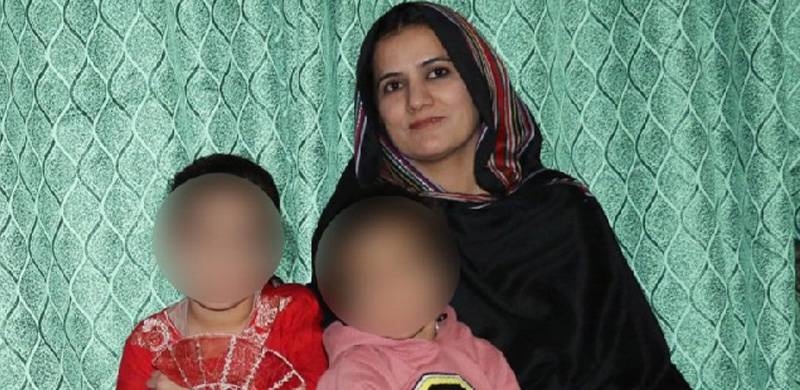
While condemning the recent suicide bombing that killed three Chinese nationals at the Karachi University, it is important to understand reasons behind such terrorist acts by not a typical suicide bomber: female, young mother of two, teacher belonging to an educated family.
Baloch have a history of grievances against the state and centre, starting from the annexation of the province, exploitation of natural resources without on-ground development, dissolution of representative government, banning of political parties and multiple military operations. The roots of the current insurgency go back to the killing of Nawab Akbar Bugti and the radicalization of Baloch youth.
These are outcomes of faulty policies of the state, which can be categorised as follows:
One, the initial resistance to the state actions by Baloch youth in colleges and universities was through non-violent mobilisation, but it was so violently suppressed that little space was left for their peaceful expression. The suppression of the Baloch voice has continued to date in the form of denying free access to the media in the province and discouraging academic discussions on Balochistan in universities and other public spaces outside the province.
Two, the state’s reaction to both non-violent as well as violent resistance has been extra-judicial -- from enforced disappearances to kill-and-dump policy. The list of the disappeared ranges in thousands and the existence of mass graves is blamed on death squads operating in the area. Such acts have deprived Baloch of their constitutional and human rights. This is attested by static state policy even after peaceful sit-ins and marches against enforced disappearances over the years. Last month, the Islamabad High Court held enforced disappearances an act of treason.
Three, the centre, through a provincial government that is beholden to the army, manages Balochistan. This has led to a lack of credibility of the provincial government and hardly a possibility of a homegrown solution to the Baloch conundrum. The security establishment has vetoes political solutions in the past. Resultantly, the Baloch youth have lost faith in the representative government systems.
Four, although the Baloch have had long standing economic grievances for being shortchanged for their natural resources, some recent developments have increased the tension. The development of the Gwadar port, a jewel crown of China Pakistan Economic Corridor (CPEC), has led to the marginalization of fisherfolk along with underdevelopment of the local population in terms of access to land and basic services, like clean drinking water, as was expressed through large scale protests recently. The protesters dispersed after receiving state guarantees but have since seen little progress towards their demands. Further, the fencing of porous border with Iran and a clampdown on oil smuggling across the border has taken away earning opportunities from families who have no other employment opportunity. This has further reinforced the perceived linkage between development and marginalization in the minds of the Baloch. It upsets them all the more when outsiders fill in limited employment slots. Likewise, real estate development projects carried out by outsiders further hampers their social mobility.
Last, militarisation and securitisation of the province invariably leads to harassment and denigration at checkpoints leading to a toxic atmosphere and a general sense of insecurity. This feeling of insecurity of being, in shape of ethnic profiling, stays with them even when they move to Lahore, Islamabad or Karachi to explore opportunities. It haunts them even in asylum as can be attested by deaths of Sajid Baloch in Sweden and Karima Baloch in Canada.
Devoid of freedom of expression, access to justice, political representation, and heightened by economic disempowerment, no wonder the Baloch are drawn to rebellion, trauma and hopelessness. The profile of the recent suicide bomber should not come as a surprise considering the Baloch youth are a product of a perpetual cycle of violence.
Thus, it is breaking this cycle of violence that holds the key. This requires a political solution to the Baloch question led by politicians, an acknowledgement on the part of the state that two decades long policy of militarization has failed miserably, and an understanding that a prosperous future of Pakistan is dependent on a de-securitized, inclusive and participatory development of Balochistan owned and led by the people of the province.
Baloch have a history of grievances against the state and centre, starting from the annexation of the province, exploitation of natural resources without on-ground development, dissolution of representative government, banning of political parties and multiple military operations. The roots of the current insurgency go back to the killing of Nawab Akbar Bugti and the radicalization of Baloch youth.
These are outcomes of faulty policies of the state, which can be categorised as follows:
One, the initial resistance to the state actions by Baloch youth in colleges and universities was through non-violent mobilisation, but it was so violently suppressed that little space was left for their peaceful expression. The suppression of the Baloch voice has continued to date in the form of denying free access to the media in the province and discouraging academic discussions on Balochistan in universities and other public spaces outside the province.
Two, the state’s reaction to both non-violent as well as violent resistance has been extra-judicial -- from enforced disappearances to kill-and-dump policy. The list of the disappeared ranges in thousands and the existence of mass graves is blamed on death squads operating in the area. Such acts have deprived Baloch of their constitutional and human rights. This is attested by static state policy even after peaceful sit-ins and marches against enforced disappearances over the years. Last month, the Islamabad High Court held enforced disappearances an act of treason.
This requires a political solution to the Baloch question led by politicians, an acknowledgement on the part of the state that two decades long policy of militarisation has failed miserably, and an understanding that a prosperous future of Pakistan is dependent on a de-securitised, inclusive and participatory development of Balochistan, owned and led by its own people.
Three, the centre, through a provincial government that is beholden to the army, manages Balochistan. This has led to a lack of credibility of the provincial government and hardly a possibility of a homegrown solution to the Baloch conundrum. The security establishment has vetoes political solutions in the past. Resultantly, the Baloch youth have lost faith in the representative government systems.
Four, although the Baloch have had long standing economic grievances for being shortchanged for their natural resources, some recent developments have increased the tension. The development of the Gwadar port, a jewel crown of China Pakistan Economic Corridor (CPEC), has led to the marginalization of fisherfolk along with underdevelopment of the local population in terms of access to land and basic services, like clean drinking water, as was expressed through large scale protests recently. The protesters dispersed after receiving state guarantees but have since seen little progress towards their demands. Further, the fencing of porous border with Iran and a clampdown on oil smuggling across the border has taken away earning opportunities from families who have no other employment opportunity. This has further reinforced the perceived linkage between development and marginalization in the minds of the Baloch. It upsets them all the more when outsiders fill in limited employment slots. Likewise, real estate development projects carried out by outsiders further hampers their social mobility.
Last, militarisation and securitisation of the province invariably leads to harassment and denigration at checkpoints leading to a toxic atmosphere and a general sense of insecurity. This feeling of insecurity of being, in shape of ethnic profiling, stays with them even when they move to Lahore, Islamabad or Karachi to explore opportunities. It haunts them even in asylum as can be attested by deaths of Sajid Baloch in Sweden and Karima Baloch in Canada.
Devoid of freedom of expression, access to justice, political representation, and heightened by economic disempowerment, no wonder the Baloch are drawn to rebellion, trauma and hopelessness. The profile of the recent suicide bomber should not come as a surprise considering the Baloch youth are a product of a perpetual cycle of violence.
Thus, it is breaking this cycle of violence that holds the key. This requires a political solution to the Baloch question led by politicians, an acknowledgement on the part of the state that two decades long policy of militarization has failed miserably, and an understanding that a prosperous future of Pakistan is dependent on a de-securitized, inclusive and participatory development of Balochistan owned and led by the people of the province.

